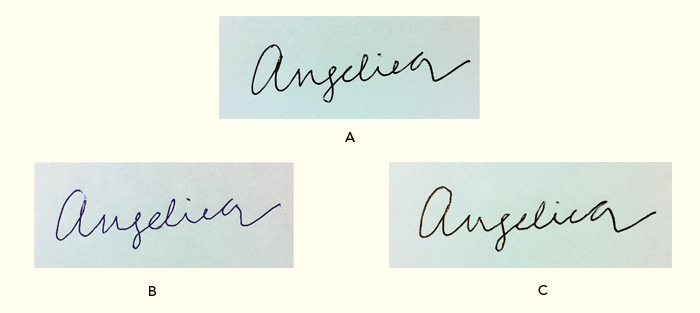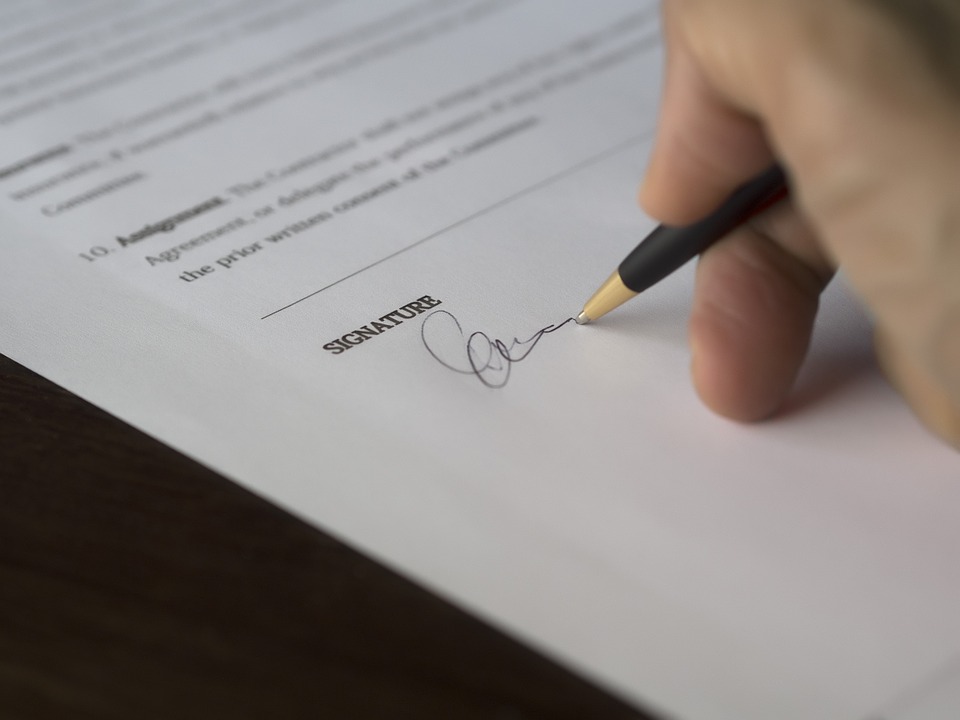We offer a free initial consultation, usually over the phone, without any obligations to determine the type of examinations and/or comparisons needed.
With us, you can be assured of quality and confidentiality.
The areas of examination we have undertaken on printed documents include, but are not limited to:
- Document authentication
- Signature authentication
- Handwriting identification
- Detect fabricated photocopies
- Document dating
- Distinguishing visually similar ink
- Restoration of faded documents
- Examination of additions, obliterations and erasures
- Detect alteration and/or post insertion in legal and business documents
- Examine threatening or harassment letters to determine the source
- Presentation of expert forensic document examination evidence in court
- Pre-court conference advice to counsel, regarding forensic document examination reports
A wide range of documents have been submitted to us by both private and public sector companies and institutions who leveraged on our forensic document examination and handwriting analysis experience to resolve disputes. Types of document include, but not limited to the following:
- Hardcopy documents
- Bank documents and forms
- Cheques
- Wills and testaments
- Deeds
- Business contracts & agreements
- Letters of anonymity or of dispute
- Credit cards and receipts
- Mortgages and leases
- Tests and exams
- Educational certificates
- Account ledgers
- Anonymous letters
- Real estate purchase and lease agreements
- Insurance forms
- Legal files
- Medical charts
- Shopping vouchers
- Gift certificates
- Text Alteration
- Tampered Contract
- Traced Signature
- Indented Impressions
- Fraud Signature
- Substituted Documents

Often additional strokes are added to existing text using similarly coloured writing instruments. The contents are changed and thus fraud is committed.
In the above illustration, the left picture shows altered text. The middle picture shows the same text examined with a video spectral magnifier using oblique infrared light at 870nm. In the right picture it shows the image examined in oblique infrared light at 530nm. The alteration is clearly detected and with this finding we were able to identify the perpetrator.

We examine cases where page/s of contracts are substituted with pages containing clauses that were not agreed upon at the signing of the contract. Even when the signatures may be genuine, tampering of pages constitutes fraud.
In the left picture above, we detected 3 sets of stapled holes on Page 1. While on Page 2, on the right, there were 4 sets. The differences in stapled holes gave us evidence of tampering. Together with other evidences detected, our report was presented to court and the case was won in favour of our client.
Note, there are only 3 sets of staple holes discernible on page 1 but 4 sets are discernible on page 2.

Fraudsters commonly use tracing methods in signatures in an attempt to pass off as genuine signatures. In the above illustration the left signature is genuine. The right signature was traced from the genuine. Standing alone it would not be easy to see that this is a traced signature. Using our superimposition techniques in our examination, we were able to see an extremely good fit and the resemblance of the traced signature execution. Our further examination detected more inconsistencies and our report was used by the parties to reach a compromise.

Our work is not limited to signature examination alone. We frequently examine the entire document for any anomalies.
The picture on the left is the Questioned signature as seen by the naked eye. Using the Foster + Freeman ESDA (Electro Static Detection Apparatus) equipment, we were able to detect indented impression of written text. This equipment is able to enhance impressions up to 4 pages underneath the written copy. The picture on the right reveals the text impressions not detected by the naked eye. Our report was presented to the defendant who admitted to the fraud and served his sentence.

Consistently we have examined fraud signatures that were difficult to determined if they were genuine or fraud.
In the illustration below signature A is genuine. Can you tell if signature B and C are genuine?
The size and the width of the word and the distance of the underlining stroke, reveals that B could have been a retrace. C appears drawn and too much of a copy of A. Using a hand held magnifier you will see the blunt initial and final stroke in specimen C caused by the more laboured efforts of the unaccustomed writer in contrast to the quick and flowing script in specimen A.
Combined with other evidence detected, we concluded that both B & C were copies and not written by our client. Our report assisted our client is securing a verdict clearing the client of a legal obligation that was not theirs to start with.

This client presented to us a set of document that was suspected of having pages substituted and clauses added to disadvantage them. On the surface the pages had no evidence of tampering until we used high magnification microscope that we were able to determine that certain pages were printed using printers that were not consistently used in other pages of the document.
In the picture illustration, we can determine and show the minute differences in the printing quality used by conventional laser vs offset vs ink jet printers.
Our report was useful to our client in settling their dispute involving millions of dollars .
Commonly Asked Questions
What are some of the limitations in document examination?
The examination may be restricted by the following and a definitive conclusion cannot be rendered:
- Not having original specimens.
- Poor quality photocopies.
- Insufficient writing for comparison.
- Insufficient known writing.
Can photocopies be used?
Yes, however much depends on the quality of the reproduction. It is important that the clearest reproduction be obtained. Multi generated copies are less reliable. Poor reproduction will lead to qualified conclusions.
What is the minimum number of specimen (undisputed) signatures needed for comparison purposes?
Generally, 10 or more signatures are recommended. Ideally they should be dated not more than 2-3 years from the date of the disputed signature.
Does document examination authenticate only signatures and handwriting?
No. Document examination also involves the examination of pen, paper, typewriting, stamp impressions, indented impression, photocopies and alterations.
The report
The report will include the manner and time of receipt of the material for examination
A list of the documents provided
The aim of the examination requested
The methodology and observations
Limitations if any
A summary of the observations
Literature or other material relied upon
Conclusions expressing the level of certainty
How is handwriting identified?
By comparing the unique writing characteristics. Writing characteristics differ due to different writing habits that reveal the individuality, thus the difference.
What are the indicators of forgery?
Poor line quality
Penlifts in unusual places
Hesitations and tremors
Blunt initial and final strokes.
How do you determine if a disputed signature has been traced?
Traced signatures naturally resemble the model from which it was traced.
Tracing will display fine tremors, pen stops in unusual places, uniform pressure, sudden starts and endings.
What are the characteristics of disguised writing?
Slow or slavish writing
Heavy pressure
Uncertain pen movements
Exaggerated slant variations
Altered or awkward capital letters




